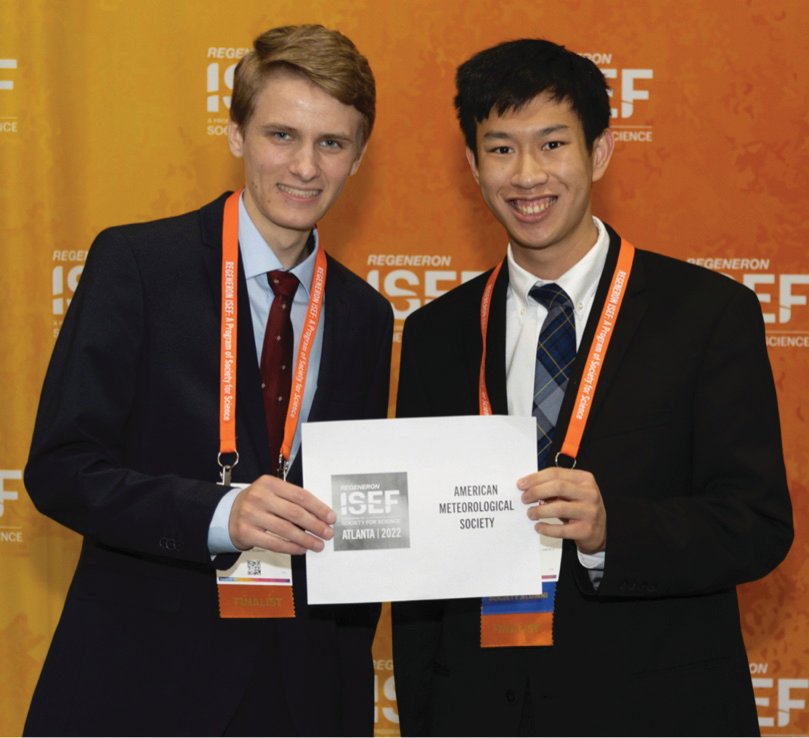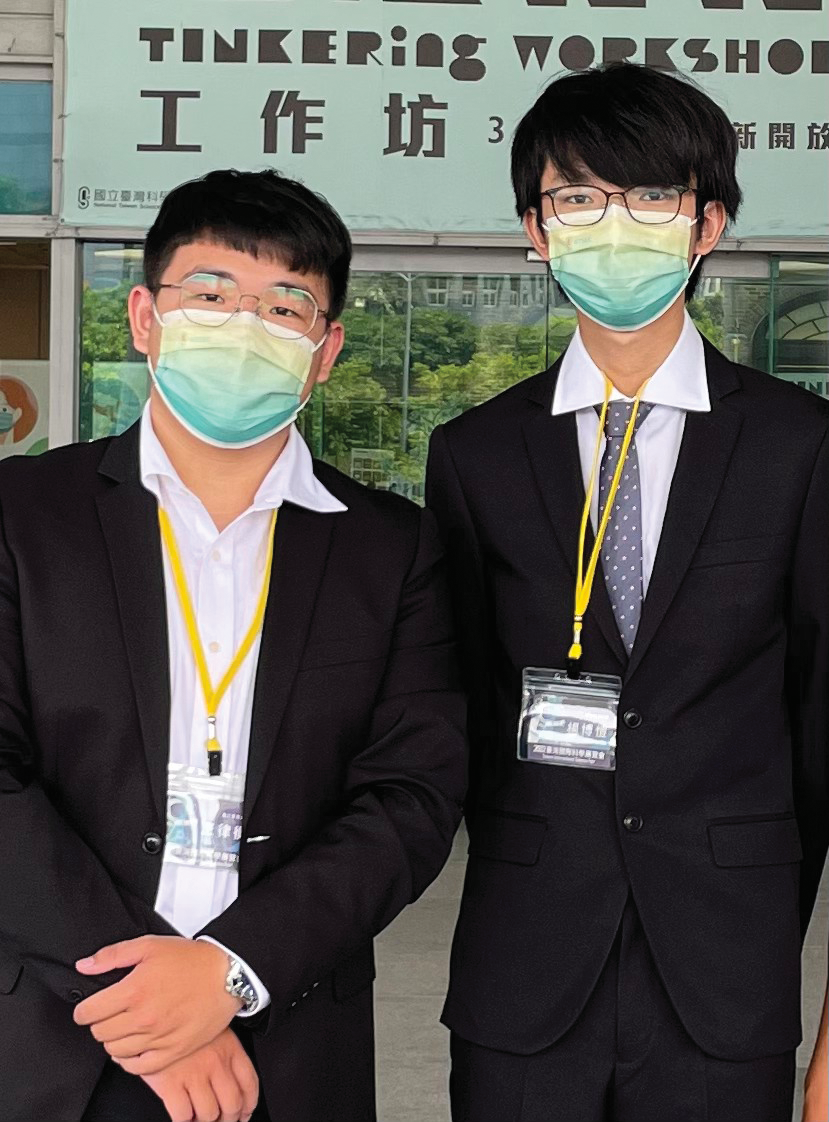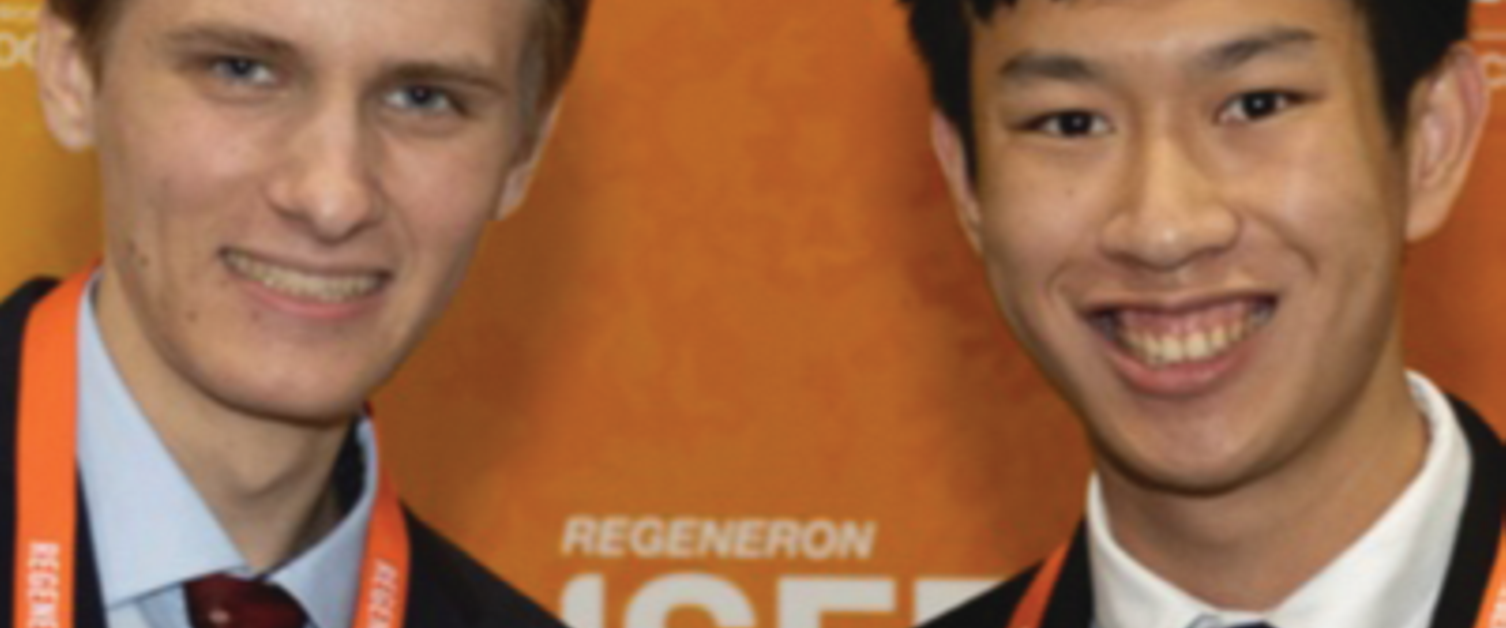Tomorrow's Scientists
- Tomorrow's Scientists, BAMS
- By AMS Staff
- Mar 13, 2023
Second-place winner Amon Schumann (left) and first-place winner Jason Wang (right).
2022 International Science and Engineering Fair
On May 12, AMS presented awards to seven high school students participating in the 72nd International Science and Engineering Fair (ISEF) at the Georgia World Congress Center in Atlanta, Georgia. These awards, ranging from $125 to $1,500, recognized outstanding student work in atmospheric science–related projects.
The Regeneron ISEF, a program of the Society for Science, is the pinnacle event in a yearlong process of local, regional, state, and national science fairs. More than 1,700 students from the United States, its territories, and 62 additional countries participated in the hybrid event both virtually and in person.
AMS was among more than 40 professional, industrial, educational, and governmental organizations providing judges to administer special awards at the ISEF. The AMS judging team included Ken Waters, National Weather Service Forecast Office, Phoenix (Ret.); and Charles Holliday, Air Force Weather Agency (Ret.).
The ISEF includes 21 disciplinary categories ranging from animal sciences to robotics and intelligent machines. Often, AMS award winners come from the core Earth and environmental sciences category. However, AMS judges may find atmospheric-related projects in other categories, such as mathematics, systems software, and physics, as well as embedded systems and engineering technology. This year’s top winner from Oklahoma City competed in the Earth and environmental sciences category.
Exhibits in the AMS competition this year featured research in climate change, the Arctic oscillation. and radiosonde design. Projects also encompassed other subjects such as seasonal wildfire prediction and urban ozone measurement and forecasting. Of the total 1,471 individual projects at the ISEF, those related to atmospheric sciences represented about 1% of the exhibits, which is consistent with the past 10-year average.
The level of sophistication in candidate projects at ISEF is quite high. Most of the students receive guidance from professional scientists as well as use of selected datasets and facilities at federal institutions and universities. The AMS judging team must sort out how much the student participated in the design of the experiment and in the data analysis. This year’s hybrid in-person and virtual platforms gave the judges additional time for study of materials and consultation to determine the degree of each student’s knowledge, technical skill, and creative ability.
The Society awards monetary recognition to the top three winners of $1,500, $1,000, and $500. The four Honorable Mention finalists receive $125, and all winners receive Certificates of Achievement. In addition, AMS provides each student with an online subscription to AMS Weather Band.
First-Place Award: Jason Wang, Oklahoma School of Science and Mathematics, Oklahoma City, Oklahoma, for “Big Data Analysis of Climate Change: Extreme Temperature, Rainfall, Snowfall” (right)
Second-Place Award: Amon Schumann, Robert-Havemann-Gymnasium, Berlin, Germany, for “Small Radiosondes on a Great Mission” (left)

Third-Place Award: Lu-Heng Wang (left) and Po-Kai Yang (right), Kaohsiung Municipal Kaohsiung Senior High School, Kaohsiung, Taiwan, for “Extremes Associated with Arctic Oscillation”

Honorable Mention Winners:
Angelia Chen, North Carolina School of Science and Mathematics, Durham, North Carolina, for “Developing a Machine Model to Predict Wildfire Risk and Identify Key Wildfire Drivers in California”
Eliana Juarez, V. Sue Cleveland High School, Rio Rancho, New Mexico, for “Urban Ozone Forecasting and Policy Recommendations through Photochemical Modeling and Machine Learning”
Chad Bo, Eleanor Roosevelt High School, Greenbelt, Maryland, for “Design of a Low-Cost Weather Station for Photovoltaic Modeling”
Marek Rauchfleisz, University High School, Torun, Kuyavian Pomeranian, Poland, for “Specialized Drone for Tropospheric Ozone Research with Precise Positioning and Wireless Data Transmission”
* For more content from the Bulletin of the American Meteorological Society, please click here.
